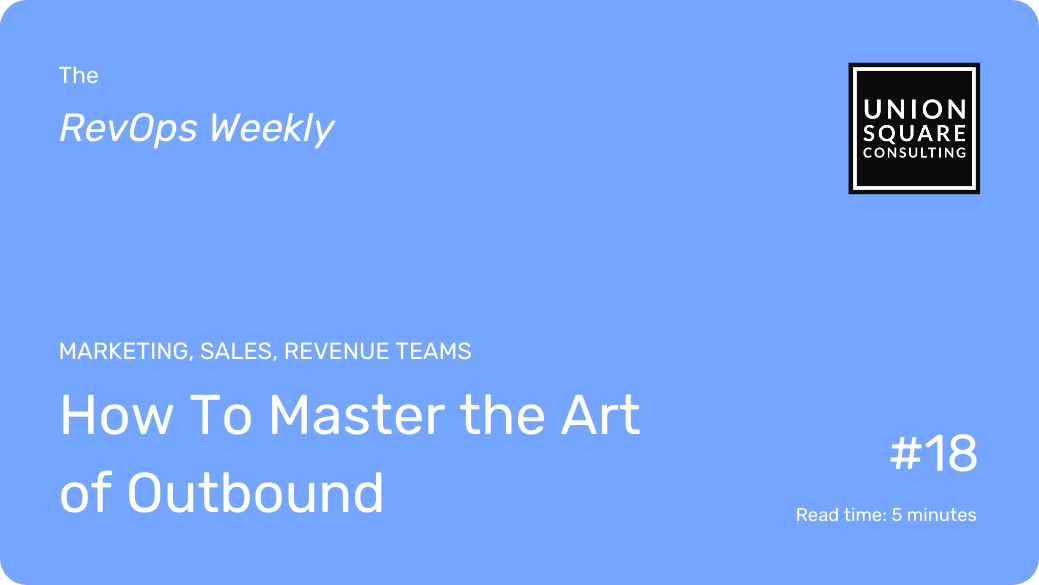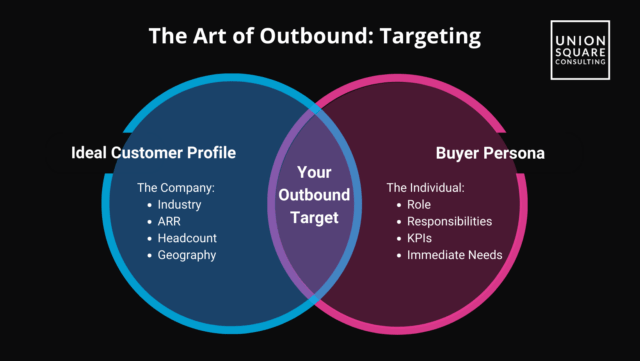
How to Master the Art of Outbound
Read time: 5 minutesIf you’ve received an obviously copy-pasted prospecting email lately, I can almost guarantee you haven’t responded to it.
At best, those emails get ignored. At worst, they get screenshot and shared for a laugh.
People just don’t respond well to pure, random, generic outbound messaging en masse.
This was evident in a recent review we did for a client. Before hiring us, they ran a year-long outbound prospecting campaign and wanted to know why it didn’t perform well.
We found that out of hundreds of thousands of emails sent, only half were ever opened. And out of those, less than 0.02% booked a meeting.
(That’s an overall booking rate of less than 1/100th of a percent.)
Sure, blasting out the same email to thousands of people might seem easy. But even with such a little squeeze, the juice still isn’t worth it.
If you want to make outbound a powerhouse for your pipeline generation, you have to focus on the people currently feeling the pain your product solves.
That means finding the intersection between your Ideal Customer Profile and Buyer Persona – then reaching them at the right time.
This isn’t a strategy for sending outbound messages, but rather a methodology that all of your outbound communication should follow – whether you’re prospecting, doing lead follow-up, or marketing.

Step One: The Right ICP
Your Ideal Customer Profile is the type of company you want to sell to. And not just any company – the one with the best product-market fit.
This is the hardest part to figure out, which makes it the easiest place to start.
You’ll want to figure out:
- What industry they’re in
- What pain they need you to solve
- What size they are (headcount and revenue)
- Whether there’s a geographic, language, or cultural component
Once you’ve defined the right company to target you can start thinking on the individual level: What are the roles and titles within that company?
For example, in commercial banking, VPs are a midlevel title below Directors. But VPs in SaaS are higher than Directors.
This is another reason you want to define your ICP first – an individual’s title isn’t helpful until you know the company they work for.
Step Two: The Right Buyer Persona
Now you can get granular about the specific person you’ll be connecting with.
You want to figure out:
- Their role
- Who they report to
- What are their KPIs
- What keeps them up at night
Keep in mind that the higher up you go on the food chain, the harder it will be to sell or market to them, both in terms of:
- Your number of Targets (there are far fewer CMOs than SDRs in the world)
- Your chances of being seen (getting an audience with the CEO will be significantly harder than the Director of Marketing)
Step Three: The Right Time
Now you can put together a list of a specific set of people that work for a particular type of company.
Creating tailored messages for these people will make it clear that you’ve done your homework – and make it more believable that you can help them.
But you still might not get a response.
Even the poster child of your perfect customer will not care about your solution if they’re not yet experiencing the pain it solves.
Which brings us to step three: time.
- Did they just enter their role?
- Was their budget recently cut or approved?
- How long have they known your business for?
- How long have they been dealing with their pain?
- Are they ready to hear your message at this point in their customer journey?
If you can meet a prospect at the right time, with the right message, your chances of qualifying them increase significantly.
In Conclusion
It might seem easier to cast the widest net possible and hope for the best, but you’re only wasting money, time, and the chance to build valuable customer relationships.
No matter whether you’re prospecting, following up on a lead, or marketing, all of your outbound strategies should follow the same general methodology: Be targeted, intentional, and don’t push people faster than they’re willing to go.
TL;DR
- High volume, untargeted, and generic outbound prospecting yields terrible results, yet it’s the chosen strategy of many B2B SaaS companies
- Instead, make your outreach meaningful by:
- Defining your Ideal Customer Profile
- Finding the intersection between your ICP and your Buyer Persona
- Using this information to tailor your messaging and time your outreach
When you’re ready, here’s how we can help:
Get a Free 1:1 Revenue Efficiency Workshop
Get one of our Senior Revenue Strategists to yourself for 1 hour and leave with a plan to increase the money-making power of your go-to-market operations.
Hire Us!
Bring us on as your Strategic RevOps Team and realize the growth potential of your revenue engine. There are 3 ways to work with us.
Get more tips like these, sent right to your inbox.
Subscribe for fresh, relevant revenue growth tips delivered every week.